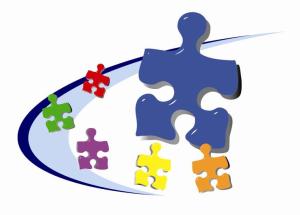 If you have a child under the age of five, you are probably quite familiar with the popular “pouches” of pureed foods that have taken over the grocery store shelves! This modern convenience has totally revolutionized on-the-go snacking. It is easy to see why they are so popular – blends of fruits, veggies, legumes, and even meats are packaged in single-serving pouches that have a long shelf life, don’t need to be refrigerated, and are easily sucked through a neat little spout at the the top. Kids can slurp down 1-3 servings of healthy goodness in no time at all!
If you have a child under the age of five, you are probably quite familiar with the popular “pouches” of pureed foods that have taken over the grocery store shelves! This modern convenience has totally revolutionized on-the-go snacking. It is easy to see why they are so popular – blends of fruits, veggies, legumes, and even meats are packaged in single-serving pouches that have a long shelf life, don’t need to be refrigerated, and are easily sucked through a neat little spout at the the top. Kids can slurp down 1-3 servings of healthy goodness in no time at all!
But before you jump on the “pouch bandwagon,” let’s pause for a moment. As a pediatric speech-language pathologist and feeding therapist who specializes in children under five (and a toddler-mom myself), I recommend taking a few points into consideration:
1. Oral Motor/Fine Motor Development
- Babies and toddlers acquire very important oral motor skills while learning to eat solid foods. If a child is mostly eating purees, the mouth is not having to do very much work. We want those lips, tongues, and jaws learning how to move in different ways to chew and swallow a variety of textures of foods. Sucking through the spout of a pouch promotes an immature oral pattern, similar to that used with a sippy cup or a pacifier. Additionally, eating solid foods allows the child to practice picking up foods with fingers, and later with utensils. These skills take practice!
2. Sensory Diversity
- Purees in pouches are a silky smooth texture that is easily swallowed with minimal oral manipulation. Lack of exposure to a variety of textures could result in decreased tolerance of more textured foods down the road. If you notice that your child already tends to gag or grimace when eating more textured foods, it is important to give him exposure to a variety of textures, and not have him get too used to smooth purees.
3. Picky Eating
- Purees in pouches advertise themselves as being filled with a variety of flavors, but in reality, they are all fairly bland and it is difficult to tease out individual tastes. I can’t tell you how many children I have evaluated who will eat a food in “pouch-form” but not in any other preparation. We want to expose our children to a variety of flavor profiles early in life to promote a well-rounded diet and willingness to try new foods. Furthermore, pouches are often “sucked down” quickly, without much time for tasting/savoring flavor. It is important that children explore and taste foods to develop a diverse palate.
4. Overeating
- With so much emphasis on fighting childhood obesity, it is important to consider the habits we are teaching our children. Pouches pack anywhere from 60-200 calories a pop. Children may get accustomed to quickly downing a pouch for a snack, and not necessarily factoring that in when choosing foods later. For older kids, pouches aren’t very filling, and therefore, it is easy to overeat.
5. Social Skills
- Meal time is more than just nutritional intake. It is a social experience. Taking time to eat a snack bite-by-bite lends itself to sitting with a friend or family member and chatting. Children learn manners and social norms surrounding meals, and watching others eat can encourage more adventurous eating.
All that being said, there is no doubt that pouches are a convenient and easy way to get some fruits and veggies in your kids. They are especially great for on-the-go snacking! As a busy working mom myself, I have certainly been known to appease my screaming toddler with a fruit pouch in the Target checkout line – I totally get it! My professional recommendation is to use them in moderation and prioritize eating solid foods as much as possible. I suggest keeping pouches reserved for snacks outside the home and avoiding them at meal times. Fostering a love of trying different foods will promote life-long, healthy-eating habits. For more ideas of ways to encourage trying new foods, check out our previous post on picky eating.
Happy Snacking!
– Elizabeth Clark McKenzie, MS, CCC-SLP

 In December 2015, a study was published that cautioned parents against the use of cause and effect toys for language development. The study (from
In December 2015, a study was published that cautioned parents against the use of cause and effect toys for language development. The study (from 